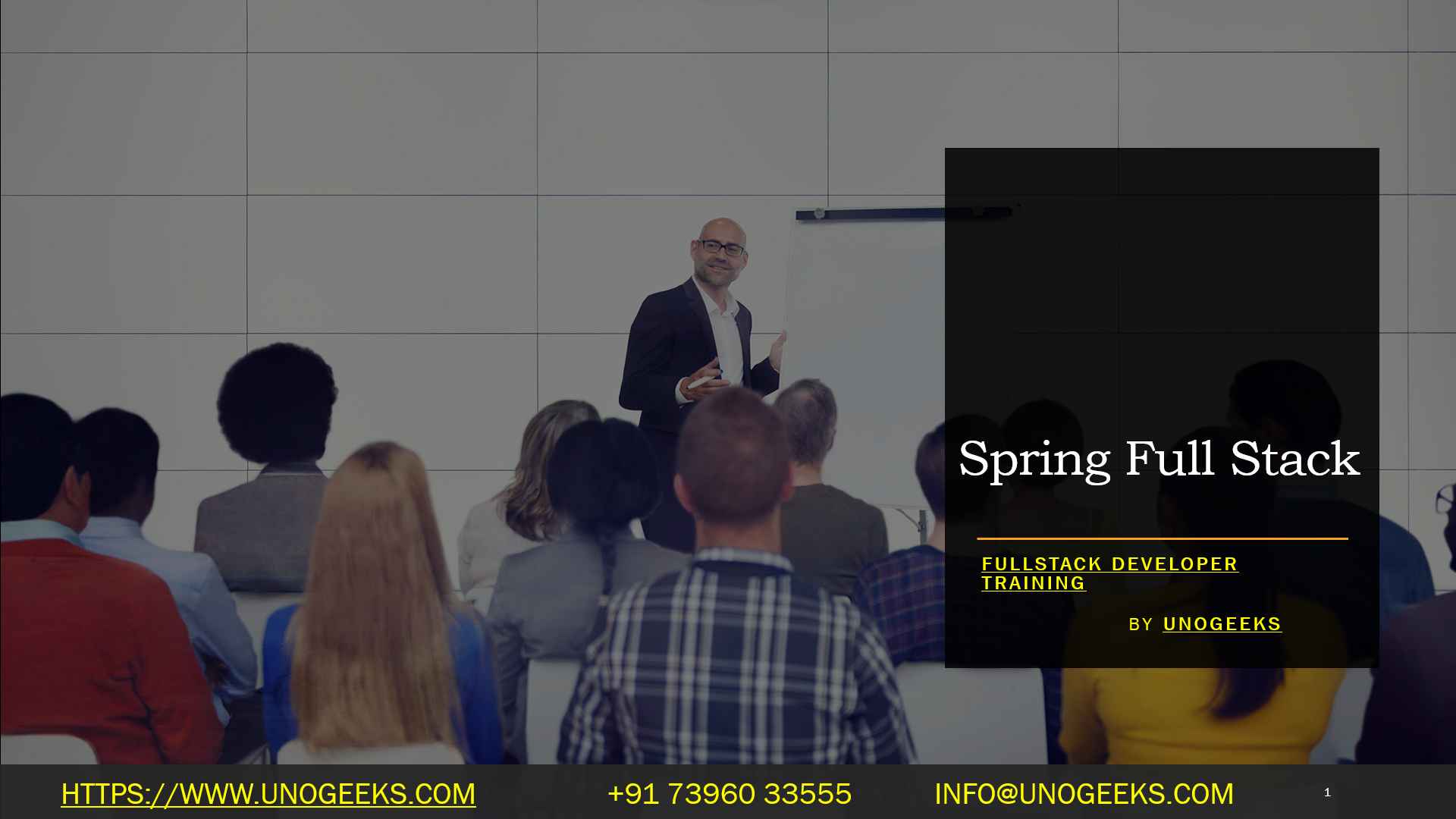Spring Full Stack
Spring Full Stack
A “Spring Full Stack” developer typically refers to a developer who specializes in using the Spring framework for both the front-end and back-end development of web applications. Spring is a popular Java-based framework that provides a comprehensive platform for building enterprise-level applications. Here’s what a Spring Full Stack developer might work with:
Front-End Development:
- Thymeleaf or JSP: Using server-side templates like Thymeleaf or JavaServer Pages (JSP) for rendering dynamic web pages.
- HTML/CSS/JavaScript: Developing and styling web pages, handling user interactions, and adding client-side interactivity using HTML, CSS, and JavaScript.
- Front-End Frameworks: Incorporating front-end frameworks like Angular, React, or Vue.js to build rich and interactive user interfaces when needed.
- RESTful APIs: Consuming and interacting with RESTful APIs provided by the back-end using JavaScript or front-end frameworks.
Back-End Development:
- Spring Boot: Building the back-end of the application using Spring Boot, a framework that simplifies Java-based web application development.
- Spring Framework: Leveraging the broader Spring ecosystem for various functionalities such as security, data access, and messaging.
- Database Integration: Connecting to databases like MySQL, PostgreSQL, Oracle, or using Spring Data for simplified database operations.
- Security: Implementing authentication and authorization using Spring Security to secure the application.
- API Development: Developing RESTful APIs using Spring MVC or other Spring modules.
- Dependency Injection: Leveraging Spring’s dependency injection and inversion of control (IoC) container for managing application components.
- Middleware: Working with middleware components like Apache Kafka, RabbitMQ, or Redis for messaging and data processing.
- Microservices: Building microservices architecture using Spring Cloud and technologies like Netflix Eureka and Ribbon for service discovery and load balancing.
Development Tools and Practices:
- Integrated Development Environment (IDE): Using an IDE such as IntelliJ IDEA or Eclipse for Java development.
- Version Control: Managing code with Git and collaborating with team members using tools like GitHub or GitLab.
- Continuous Integration/Continuous Deployment (CI/CD): Implementing CI/CD pipelines to automate testing and deployment processes.
- Testing: Writing unit tests, integration tests, and end-to-end tests using testing frameworks like JUnit and Mockito.
- Containerization: Containerizing applications using Docker and orchestrating them with tools like Kubernetes.
- Logging and Monitoring: Implementing logging and monitoring solutions like ELK Stack (Elasticsearch, Logstash, Kibana) or Prometheus and Grafana.
- Documentation: Creating and maintaining documentation for APIs and application architecture.
Full Stack Developer Training Demo Day 1 Video:
Conclusion:
Unogeeks is the No.1 IT Training Institute for Full Stack Developer Training. Anyone Disagree? Please drop in a comment
You can check out our other latest blogs on Full Stack Developer Training here – Full Stack Developer Blogs
Please check out our Best In Class Full Stack Developer Training Details here – Full Stack Developer Training

———————————-
For Training inquiries:
Call/Whatsapp: +91 73960 33555
Mail us at: info@unogeeks.com
Our Website ➜ https://unogeeks.com
Follow us:
Instagram: https://www.instagram.com/unogeeks
Facebook: https://www.facebook.com/UnogeeksSoftwareTrainingInstitute
Twitter: https://twitter.com/unogeeks
